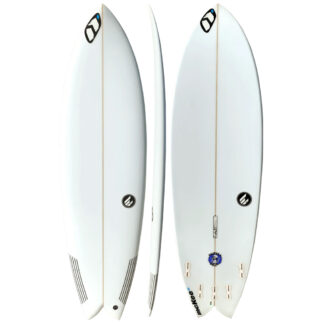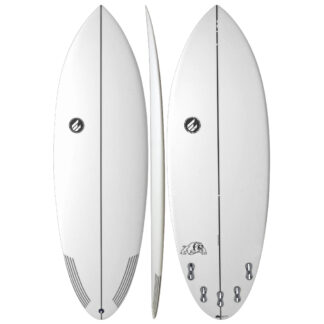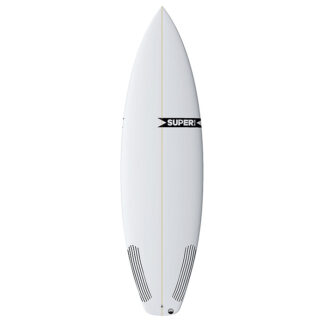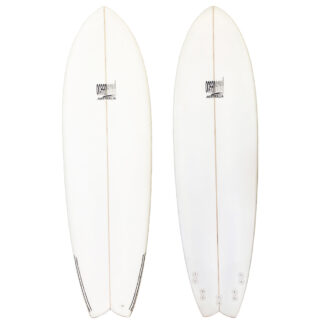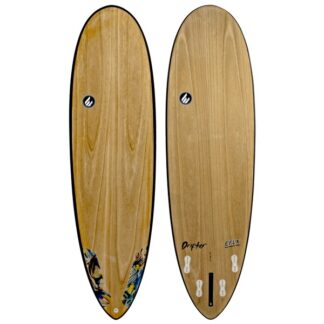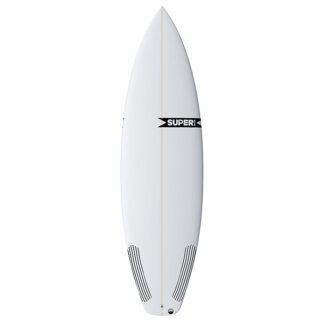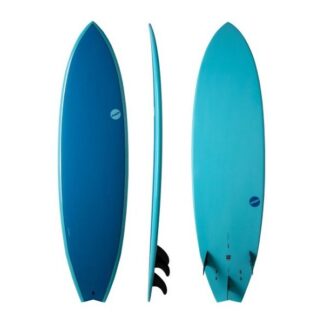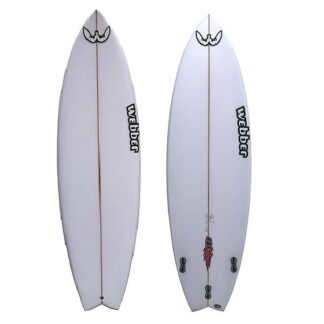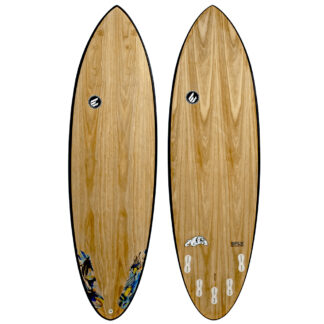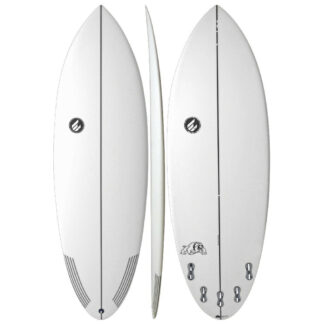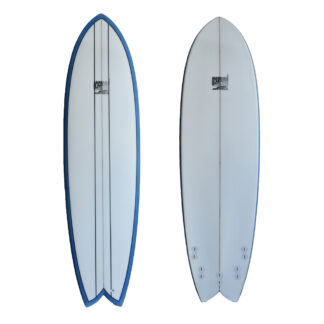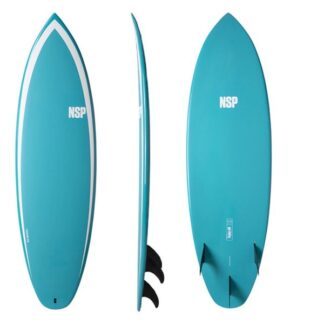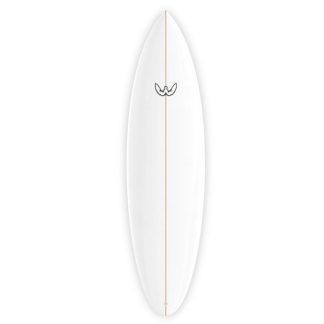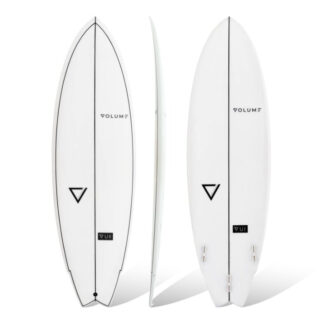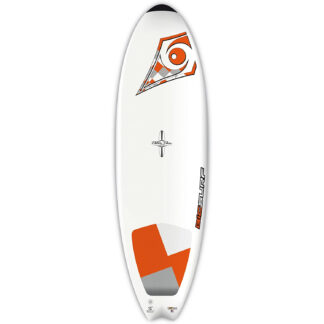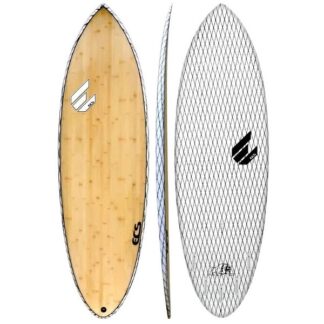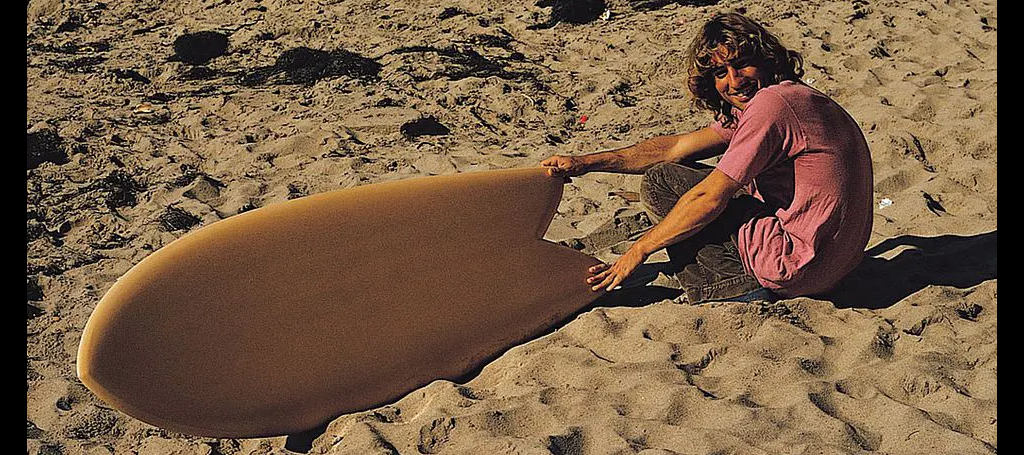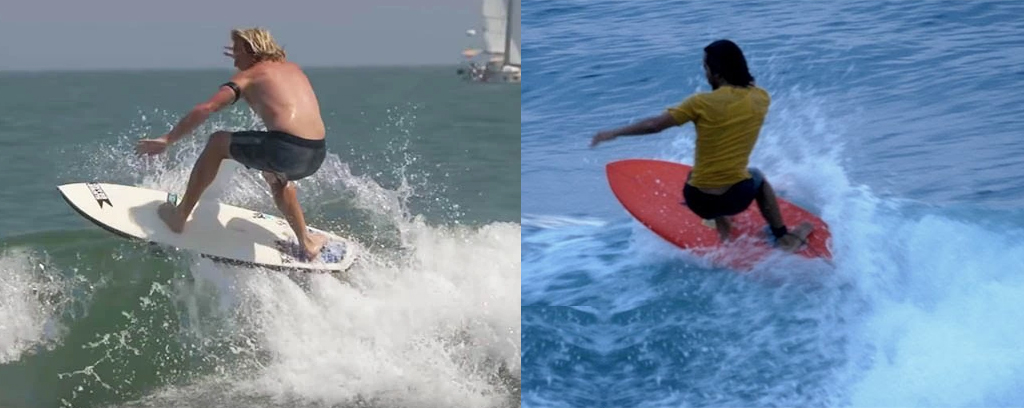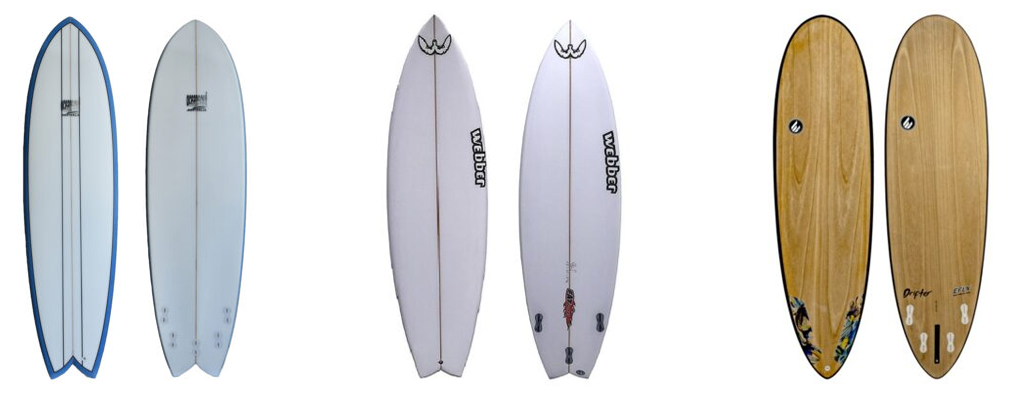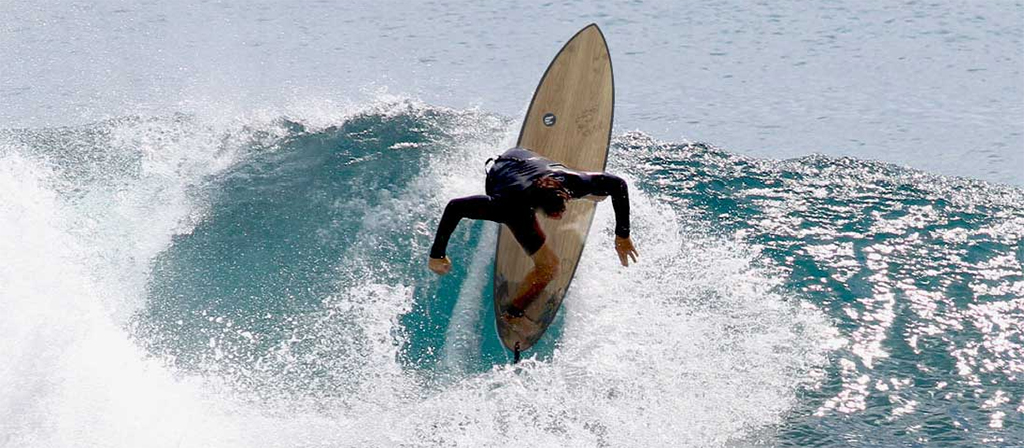Showing 1–16 of 28 resultsSorted by popularity
-
ECS Purple Haze Surfboard
$699.00 Select options This product has multiple variants. The options may be chosen on the product page -
ECS Bulldog PU 2 Surfboard
Price range: $599.00 through $649.00 Select options This product has multiple variants. The options may be chosen on the product page -
Superbrand Magic Mix Surfboard Futures
$795.00 Select options This product has multiple variants. The options may be chosen on the product page -
Ocean Soul EPS Fish Surfboard
$575.00 Select options This product has multiple variants. The options may be chosen on the product page -
ECS Drifter V Flex Fun Board
$575.00 Select options This product has multiple variants. The options may be chosen on the product page -
Superbrand Magic Mix Surfboard FCS II
$795.00 Select options This product has multiple variants. The options may be chosen on the product page -
NSP Elements HDT Fish Surfboard
Price range: $729.00 through $789.00 Select options This product has multiple variants. The options may be chosen on the product page -
Webber Fatburner Surfboard
$850.00 Select options This product has multiple variants. The options may be chosen on the product page -
ECS Bulldog Paulownia Surfboard
$599.00 Select options This product has multiple variants. The options may be chosen on the product page -
ECS Bulldog HPE Epoxy Surfboard
Price range: $575.00 through $649.00 Select options This product has multiple variants. The options may be chosen on the product page -
Ocean Soul PU Fish Surfboard
$549.00 Select options This product has multiple variants. The options may be chosen on the product page -
NSP Elements HDT Tinder Surfboard
Price range: $599.00 through $659.00 Select options This product has multiple variants. The options may be chosen on the product page -
Webber Silk Surfboard
$995.00 Select options This product has multiple variants. The options may be chosen on the product page -
Volume VU2 Utility Series Fish
$599.00 Select options This product has multiple variants. The options may be chosen on the product page -
5’10 Bic Dura Tech Fish
$389.00 Read more -
ECS Bulldog V Flex Surfboard
$575.00 Select options This product has multiple variants. The options may be chosen on the product page
Showing 1–16 of 28 resultsSorted by popularity
Fish Surfboards
Fish surfboards give you especially good-fun surfing in small waves. The original Fish was designed to excel in tiny weak waves. Over time Fish shapes have evolved with shapers taking characteristics of the Fish shape and adding them to boards to take on bigger waves, boards great for Beginners, or to surf more progressively. If you want fun fast surfing in small waves, you should have a Fish or Fish-style board in your quiver.
Original Fish
Above, this is considered an image of one of the first models of what has become known as the Fish. Its creator Steve Lis is holding the board circa 1973, it was based on a knee board. Photo credit: Bolster. Below, images of two modern style Fish from Superbrand Surfboards. Both have the full Fish nose. From the mid point back the boards start to narrow. Keeping the tail wide but not too wide gives you the ability to still do turns while maintaining the fun Fish feel. Note the board on the left, the Serial Keeler, has a swallow, not as wide as the original Fish swallow. This will give you versatility in being able to surf bigger waves with more vertical moves. The Fling on the right has a wide diamond tail that maximises speed in small waves. It has a vee bottom so that the tail doesn’t sit too flat and dead on the water. This vee helps the board do turn
The original Fish surfboard design is still replicated today. It has a full nose, that comes to a point rather than being rounded like a Longboard. The tail of the board is very wide, often only slightly less wide than the nose. The tail design originally was that of a swallow tail, a big wide swallow. Between the full nose and wide tail the outline of the board has only a slight curve, almost a straight line. The all important rocker or bottom curve is a normal entry, flat through the middle, to very slight rocker in the tail. So overall its considered to have a flat rocker.
In terms of fins the original Fish was a Twin Fin with two side fins. Twin Fins give you a feeling of speed. The the original Fish was a small board, based on a knee board. So it was a lot shorter in height than the rider.
These pics capture the Superbrand The Fling and Serial Keeler boards in action. Fish boards tend to surf flatter. You can see both boards are flatter in their orientation, ie the nose is not pointing vertically. The design features that make a Fish what it is tend to keep them surfing flatter. However the waves are small and the surfers are still in critical parts of the wave right on the power. Note the spray and lines so there’s lots of speed generated by the Fish boards
Each of the Fish features gives you great surfing in small waves. The full nose gives you good paddling and wave catching. With the right entry rocker the nose takes on its own momentum almost pulling you into waves. The wide tail gives you more area. The extra area harnesses the best of the wave energy, important when the waves are small. The wide tail also gives you floatation so you’re not bogging, you keep flow going, even when the small wave is slowing down. The straight rails through the middle give speed. The flatter rocker also gives speed. Having a Twin Fin setup also gives speed.
So speed is maximised in a Fish in small waves where it’s hard to find. The tradeoff is that the traditional Fish is not good at, or can not do, top to bottom turns. It does more drawn out off the bottom and off the top turns rather than vertical moves. So the Fish has evolved.
Construction Evolution
You can give your Fish high performance by using the latest construction tech. On the left this model of Superbrand’s The Fling uses an EPS core that is super light and extra buoyant. So you can use less of it to give you the same floatation meaning less weight. There’s no stringer. The normal fibreglass is replaced with a carbon material giving even lighter weight. Light weight means maximising the power of the wave so you go faster. The second board is an NSP Elements HDT Fish. It also has no stringer and uses layers of lightweight material to give you super response
Using the latest materials such as EPS foam for extra floatation, carbon for lighter and stronger construction, a Fish can give you a lot more pop in small waves. This equates to speed and fun.
Alternatively having a Fish constructed with the original style foam blank and old school heavier volan fibreglass can give you a feel of classic surfing. This extra weight is not a disadvantage for cruising. The weight helps you carry through drawn out bottom and top turns in sections where the wave may be too full and weak.
Bigger Fish
The original Fish shape was a short squat board. Here we have Fish style boards that have been lengthened. They’ll cover a wider range of conditions and surf styles, such as being good for Beginners. They are still wide for their size. This width gives them the Fish characteristics of easy paddling and wave catching, and speed on the wave. Note all have the trail drawn in to control the speed. On the left the Ocean Soul Fish has a full nose and straight outline till the tail. This board will be fast. On the right the ECS Drifter V Flex Fun Board is super wide at the front so it will paddle and catch waves great and still be able to carve. The middle board, the Webber Fat Burner carries the width only through the middle with performance nose and tail
New Fish evolutions include making the boards longer and bigger. This allows the board to surf in bigger waves where you need rail length to drive around bigger sections. Being bigger also caters for bigger riders to get the fun going in small waves as they get plenty of floatation as well having all those speed generating characteristics.
A big Fish also helps Beginners, who perform best with extra board size. For Beginners fun equates to going fast. So a bigger Fish is a definite Beginner option.
Shape Evolution
A talented surfer can perform on a Fish. This Fish is the NSP Elements HDT Fish. Note that while the nose is full and the front outline is wide and straight, the tail is drawn in. The drawn in tail, while reducing the outright speed in small waves, gives you a lot more control and maneuverability as the waves get bigger. You can see in the first image this Fish is going much more vertical. As Fish surfboards became more popular surfers wanted to do more performance surfing on them hence the design evloution
Fish evolutions include reducing the size or replacing the swallow tail.
The swallow loses energy through the gap in the middle. The benefit of a swallow tail is that is acts almost like two separate tails. When you do a turn only one side is in the water giving you good bite, control and direction.
This is the Superbrand Fling being thrown into a massive cutback on a small wave. This board has a wide square tail with a vee. The square tail maximises even more of the wave energy. The vee allows the board to go on rail rather than being stuck flat on the wave. You can see how much of the bottom rail is in the water. The vee will keep the turn going, not bogging. So the wide Fish outline can give performance surfing with a few evolved refinements, like a vee, added
Having a solid tail like a wide square or diamond tail gives you all that area back. So when you push down the water is forced to squirt you forward. A wide square tail also has drawbacks. It can be too much area sitting flat on the water creating friction and a dead feeling. However with the Superbrand Fling a vee is added in the bottom. This helps the water squirt out one side or the other, also helping your board get on rail to turn. Boards with this vee in the bottom can carve with power moves.
Not all boards with a swallow are a Fish. There’s a tendency to call a standard Shortboard, Hybrid or even a high performance Shortboard a Fish just because it has a swallow. For example, Hybrid boards have a full nose like a fish and can have a straighter outline however they aren’t really considered Fish.
Must Have
A Fish can be versatile. It can get you into small waves with speed. As the waves get bigger it will give you higher speed allowing you to setup bigger moves. Note that the ECS Drifter V Flex Fun Board’s narrower tail is clearly seen here at work getting the Fish vertical
A Fish is a must have board in your quiver. Maybe you can get two. A modern evolved Fish with advanced construction materials to give you super high performance surfing in tiny weak waves. Also you need to try an old school Fish for the fantastic cruising and down the line feel it gives.


